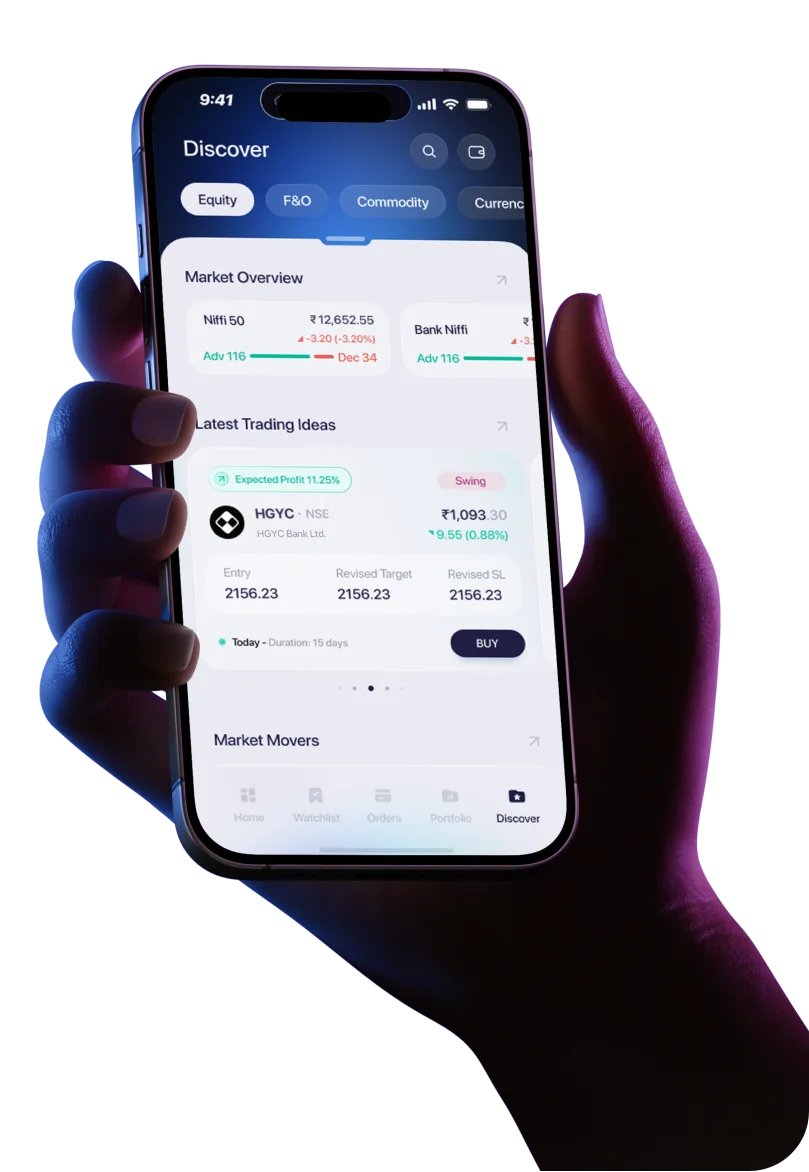In this article, we will discuss
- Overview of Nifty 50
- Historical Returns of Nifty 50
- The volatility of Nifty 50
- Factors Affecting Nifty 50 Volatility
- Risks Associated with Nifty 50
- Comparison of Nifty 50 to Other Indices
- Factors Influencing the Nifty 50's Performance
- Investment Strategies Based on Nifty 50 Historical Performance
Are you curious about the performance of the Nifty 50 index? Do you want to know this popular stock market benchmark's historical returns, volatility, and risk? Well, you're in luck, my friend!
The Nifty 50 index is a reflection of the Indian economy, and one of the most widely followed stock market benchmarks in India. It comprises 50 of the largest and most liquid stocks listed on India's National Stock Exchange (NSE), spanning various sectors. The index is chosen based on their market capitalization, liquidity, and other parameters.
Understanding the historical performance is important for investors to make informed investment decisions. In this blog article, we'll dive deep into the world of Nifty 50 and explore its fascinating past. Get ready for an informative journey that will leave you amazed and informed.
Overview of Nifty 50
Nifty 50 is a popular Indian stock market index. It tracks the performance of 50 large and well-established companies listed on India's National Stock Exchange (NSE). It is among the most widely followed indices in the Indian equity market and the BSE Sensex. It covers various sectors of the economy, such as banking, IT, energy, pharma, auto, FMCG, and metals. The index is calculated using the free-float market capitalization method, meaning only the shares available for trading are considered for the index value. This is also used as a benchmark for various financial products, such as mutual funds, exchange-traded funds (ETFs), derivatives, and index funds. It was launched on April 21, 1996, with a base value of 1000 points. As of May 10, 2023, this index closed at 18,273.25 points, up by 0.04% from the previous close.Historical Returns of Nifty 50
The Nifty 50 is a market cap-weighted index of 50 large blue chip companies traded on the National Stock Exchange of India (NSE). It represents about 62% of the free float market capitalization and 41% of the traded value of all stocks on the NSE as of September 2022. It is also computed in four currencies: Indian Rupee (INR), US Dollar (USD), Australian Dollar (AUD) and Canadian Dollar (CAD). Since its inception in 1996, this Index has delivered impressive returns for investors. However, the returns are not linear, and the index has seen periods of high volatility. The table below summarizes the annual Nifty returns Index from 1996 to 2022:
| Year | Return |
| 1996 | 33.2 |
| 1997 | 10.6 |
| 1998 | -18.7 |
| 1999 | 8.7 |
| 2000 | −14.65% |
| 2001 | −16.18% |
| 2002 | 3.25% |
| 2003 | 71.90% |
| 2004 | 10.68% |
| 2005 | 36.34% |
| 2006 | 39.83% |
| 2007 | 54.77% |
| 2008 | −51.79% |
| 2009 | 75.76% |
| 2010 | 17.95% |
| 2011 | −24.62% |
| 2012 | 27.70% |
| 2013 | 6.76% |
| 2014 | 31.39% |
| 2015 | −4.06% |
| 2016 | 3.01% |
| 2017 | 28.65% |
| 2018 | 3.15% |
| 2019 | 12.02% |
| 2020 | 14.17% |
| 2021 | 24.12% |
| 2022 | 4.32% |
This has delivered an average annual return of around 14-16% since 1996. However, the index saw sharp corrections during periods of economic uncertainty, like the Global Financial Crisis of 2008-09 and the COVID-19 pandemic in 2020. The index has also witnessed several bull and bear phases over the years. The longest bull run lasted from October 2001 to January 2008, when the index rose from 850 to 6,288 points. The longest bear run lasted from January 2008 to March 2009, when the index fell from 6,288 to 2,524 points.
The volatility of Nifty 50
Volatility measures the rate and magnitude of price changes in finance, often referred to as risk. The volatility index measures the market’s expectation of volatility over the near term based on the order book of the underlying index options. India VIX is a volatility index based on the Nifty 50 option prices. It indicates the expected market volatility over the next 30 calendar days.
India VIX is computed using the computation methodology of CBOE, with suitable amendments to adapt to the Nifty 50 options order book using cubic splines, etc. India VIX is updated every 15 seconds during market hours and disseminated by NSE.
India VIX reflects the degree of uncertainty or fear in the market. A high value of India VIX implies that the market expects significant changes in this index over the next 30 days, while a low value implies that the market expects minimal changes. India VIX has an inverse relationship with this index. When it rises, India's VIX tends to fall and vice versa. The highest value of India VIX was 86.64 on March 24, 2020, and the lowest was 8.60 on January 9, 2018. The average value of India VIX since its inception in March 2009 till May 2023 is 21.18. The current value of India VIX as on May 10, 2023, is 14.01.
Factors Affecting Nifty 50 Volatility
Several factors affect the volatility of this index. Here are some of the significant factors:-
Economic Indicators
-
Global Factors
-
Company-specific News
Risks Associated with Nifty 50
Here are the key risks associated with investing based on the Nifty 50 index performance:-
Concentration Risk
-
Sector Risk
-
Volatility
-
Liquidity Risk
-
Macroeconomic Risk
Comparison of Nifty 50 to Other Indices
| Index | Returns (5-year CAGR) | Volatility (5-year annualized) | Beta | Sharpe Ratio | Expense Ratio | Number of Stocks |
| Nifty 50 | 16.90% | 16.60% | 1 | 0.87 | 0.05% | 50 |
| BSE Sensex | 15.90% | 16.80% | 1.02 | 0.81 | 0.05% | 30 |
| Nifty Midcap 100 | 19.10% | 20.90% | 1.16 | 0.74 | 0.30% | 100 |
| Nifty Smallcap 100 | 22.60% | 23.50% | 1.21 | 0.88 | 0.50% | 100 |
- All the returns are annualized and based on the last 5-year period.
- Beta measures the sensitivity of the index's returns to the market returns, with a beta of 1 indicating that the index moves in line with the market.
- Sharpe ratio measures the excess return earned by the index per unit of risk taken, with a higher ratio indicating better risk-adjusted returns.
- The expense ratio is the annual fee charged for managing the fund.
This index comprises 50 large-cap stocks and is a well-diversified index representing various sectors of the Indian economy. Despite market fluctuations and risks, It has consistently delivered strong returns and is a popular choice among investors looking for long-term wealth creation.
Factors Influencing the Nifty 50's Performance
The Nifty 50's performance is a critical indicator of the Indian economy's health and the stock market's overall performance. Several factors influence the Nifty 50's performance, including:-
Economic Factors
The state of the Indian economy is one of the most significant factors that affect this index's performance. Economic indicators such as GDP growth, inflation rate, and interest rates directly impact the stock market's performance. For instance, a high GDP growth rate typically translates to higher corporate earnings, leading to a bullish market.
Similarly, inflation and interest rates play a crucial role in investor sentiment. High inflation rates and interest rates can lead to reduced consumer spending, which can negatively affect the profitability of companies. This, in turn, can lead to a bearish market.
-
Political Factors
-
Industry-Specific Factors
-
Global Factors
Investment Strategies Based on Nifty 50 Historical Performance
Based on the historical performance of the Nifty 50, here are some investment strategies that investors may consider:- Track blue-chip stocks: Focus on investing in large-cap and blue-chip stocks that are part of the Nifty index. These companies have a strong track record and are more stable performers over the long run.
- Adopt a buy-and-hold strategy: Since Nifty companies are established sector leaders, a simple buy-and-hold strategy can work well for long-term capital appreciation. Try to ignore short-term market volatility and focus on the long run.
- Invest through SIP: Starting a systematic investment plan (SIP) in index funds tracking this index is a good way to benefit from the index's performance over time. SIP minimizes the timing risk of investing a lump sum amount.
- Rebalance periodically: Monitor your portfolio periodically and rebalance by selling the outperformers and buying the underperformers. This helps lock in gains from well-performing stocks and averages your purchase costs.
- Use dips as buying opportunities: When the broader market pulls back or corrects, use it as a chance to accumulate Nifty stocks at relatively lower prices. This improves your cost basis and potential returns.
Conclusion
In conclusion, the Nifty 50 has consistently performed in the Indian stock market, delivering strong returns over the long term. While the index has experienced periods of volatility and market downturns, it has bounced back and delivered solid returns in the long run. Investors looking to invest in the Indian stock market can consider investing in the Nifty 50. However, it is important to note that investing in the stock market carries inherent risks, and investors should always do their due diligence and seek the advice of a financial advisor before making any investment decisions.
If you are interested in investing in the stock market, you can consider Samco, India's leading online discount broker. Samco offers a range of investment options, including equity, derivatives, mutual funds, and more. With their advanced trading platforms and research tools, Samco can help you make informed investment decisions and achieve your financial goals. Visit their website today to know more.



 Easy & quick
Easy & quick
Leave A Comment?